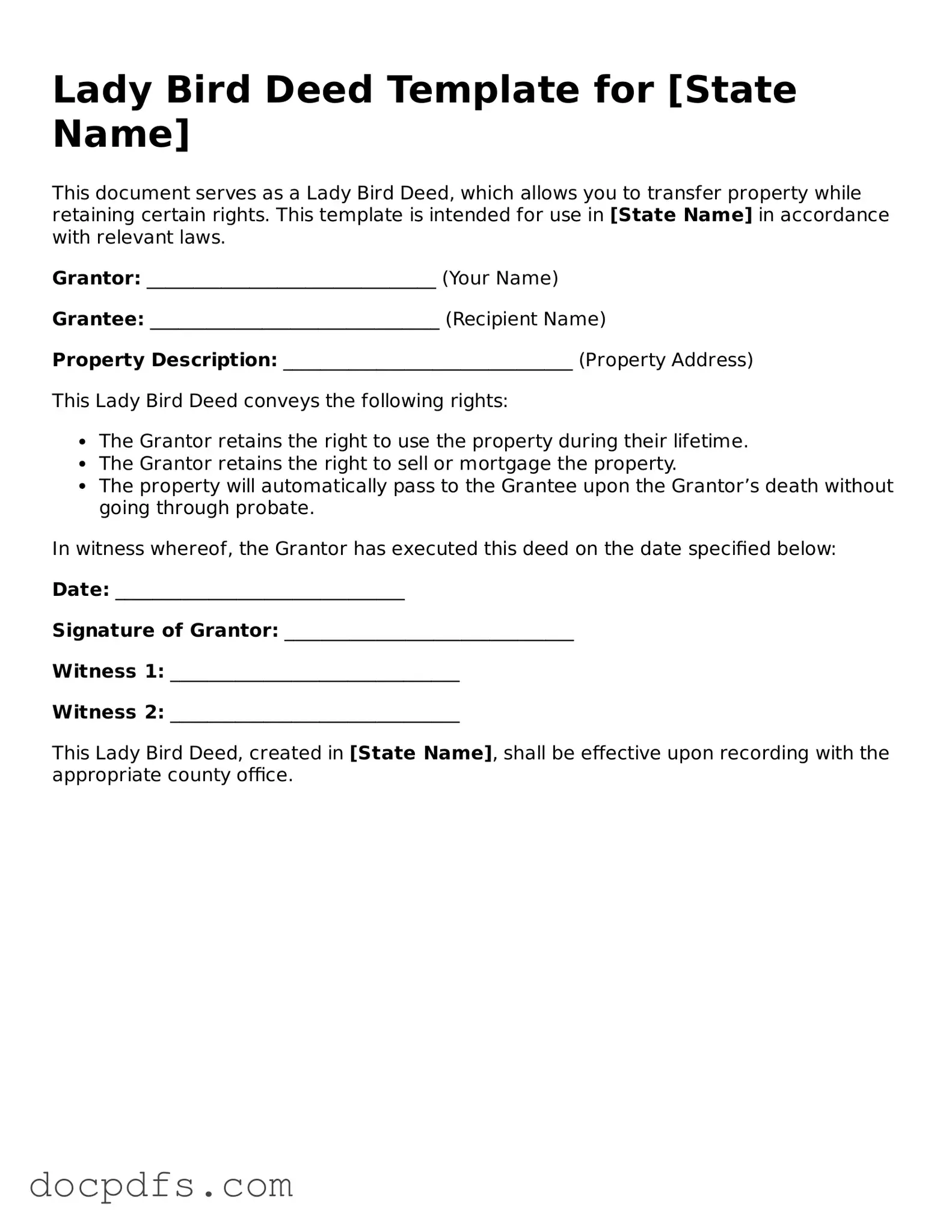Legal Lady Bird Deed Document
The Lady Bird Deed, also known as an enhanced life estate deed, is a legal document that allows property owners to transfer their real estate to beneficiaries while retaining control during their lifetime. This unique form of deed provides significant benefits, including the ability to avoid probate and protect the property from creditors. Understanding the intricacies of the Lady Bird Deed can help individuals make informed decisions about their estate planning needs.
Open Lady Bird Deed Editor Now
